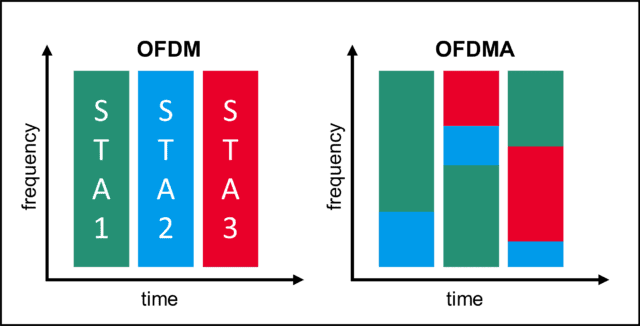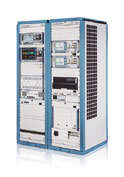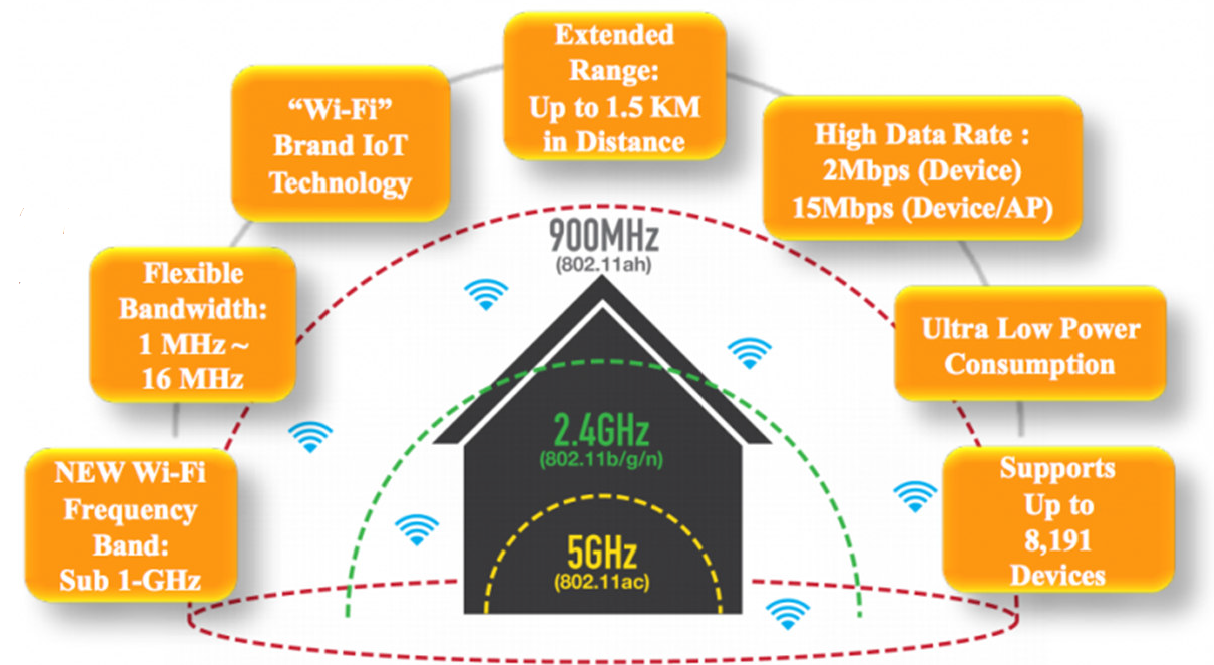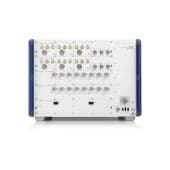Peter Macejko, Wireless Network Specialist, Anritsu Corporation
The most recent version of WLAN (Wireless Local Area Network) is Wi-Fi 6, the sixth successful commercial version of the IEEE 802.11 standards. Although officially known in the industry by its IEEE designation, the term Wi-Fi 6 is more common among consumers.
The older Wi-Fi 5 standard can achieve higher data transmission speeds for a user, but only under ideal “lab” conditions. New features added to Wi-Fi 6 make it a more robust technology and closer to the promised speeds.
One of the most notable innovations is the use of OFDMA (orthogonal frequency-division multiple access) technology. Similar to cellular LTE technology, time slots are assigned to users on certain frequencies for their radio transmission. Thus, communication between an access point and the stations is managed much more efficiently than with the previous technique, OFDM (Orthogonal Frequency Division Multiplexing).
OFDMA also channels the available frequencies in a different way. In the above standards, the minimum channel width is 20 MHz. In some cases two adjacent channels can be joined by varying the carrier frequency at the center of the two channels. This allows the width of the channel to be
40 MHz, 80 MHz and 160 MHz, thus increasing transmission speeds at the cost of occupying more frequency.
In Wi-Fi 6, the smallest unit available for data transmission is called a RU (Resource Unit). The RU can contain 26, 52, 106, 242, 484 or 997 tones (subcarriers). Since the spacing between subcarriers in Wi-Fi 6 is 78,125 kHz, the minimum space that RU occupies is about 2 MHz of the frequency range, allowing for better tailoring of spectrum resources than in previous standards.
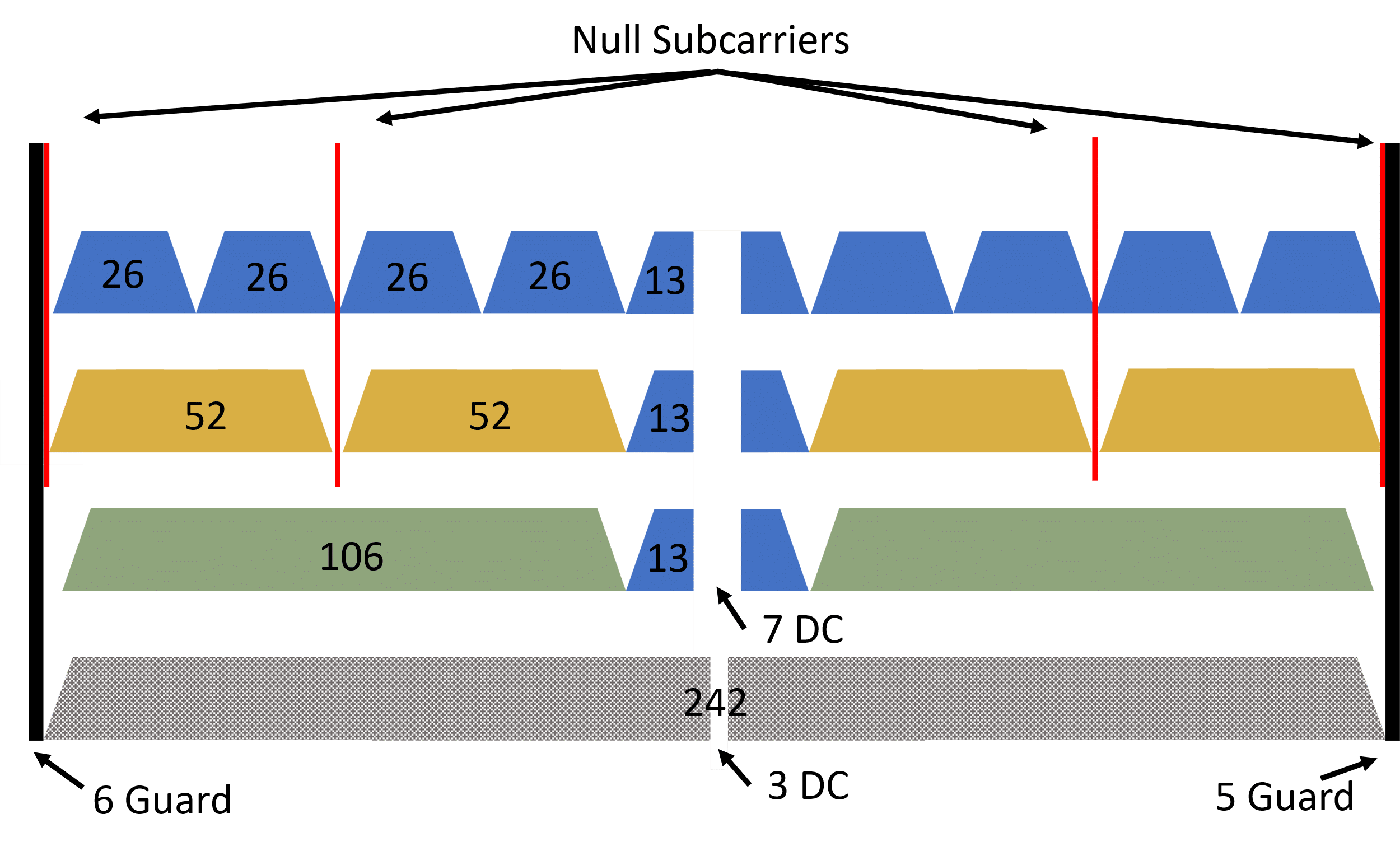
Assignment of RUs within the 20 MHz channel bandwidth.
In addition to improving spectrum efficiency, more bits per transmitted symbol are also transmitted thanks to modulation of the 1024QAM data subcarrier. This modulation allocates 10 message bits to a transmitted symbol (2^10=1024), thus providing higher data rates for Wi-Fi 6 than with previous standards. The duration of the symbols has also been multiplied by four due to the denser intervals of the subcarrier. Simply put, the smaller the signal is in the frequency domain, the larger it is in the time domain, and vice versa. This improves robustness, especially outdoors.
New, Wi-Fi 6 addresses applications in the IoT (Internet of Things) environment, a world where low consumption is paramount. IoT devices often come with batteries that cannot be replaced as replacing them would require destroying the device. Hence, it is important to have communication protocols that integrate energy saving functions.
One of the features of Wi-Fi 6 is the smaller RU with 2 MHz width. Using a smaller frequency spectrum to send a signal requires less power than larger frequency spectrums; eg, the channel of the previous standard with a width of 20 MHz. Thus energy is saved due to the fewer number of subcarrier frequencies used.
Another power-saving feature incorporates schedules that allow a Wi-Fi 6-powered device to spend some time "asleep." This function is called TWT (Target Wake Time). In sleep mode, the consumption of wireless devices is minimal. The device is activated at a certain time and sends information; for example, the temperature in a room or information about the lack of medical products. Once this information is communicated, a WLAN device can return to sleep mode.
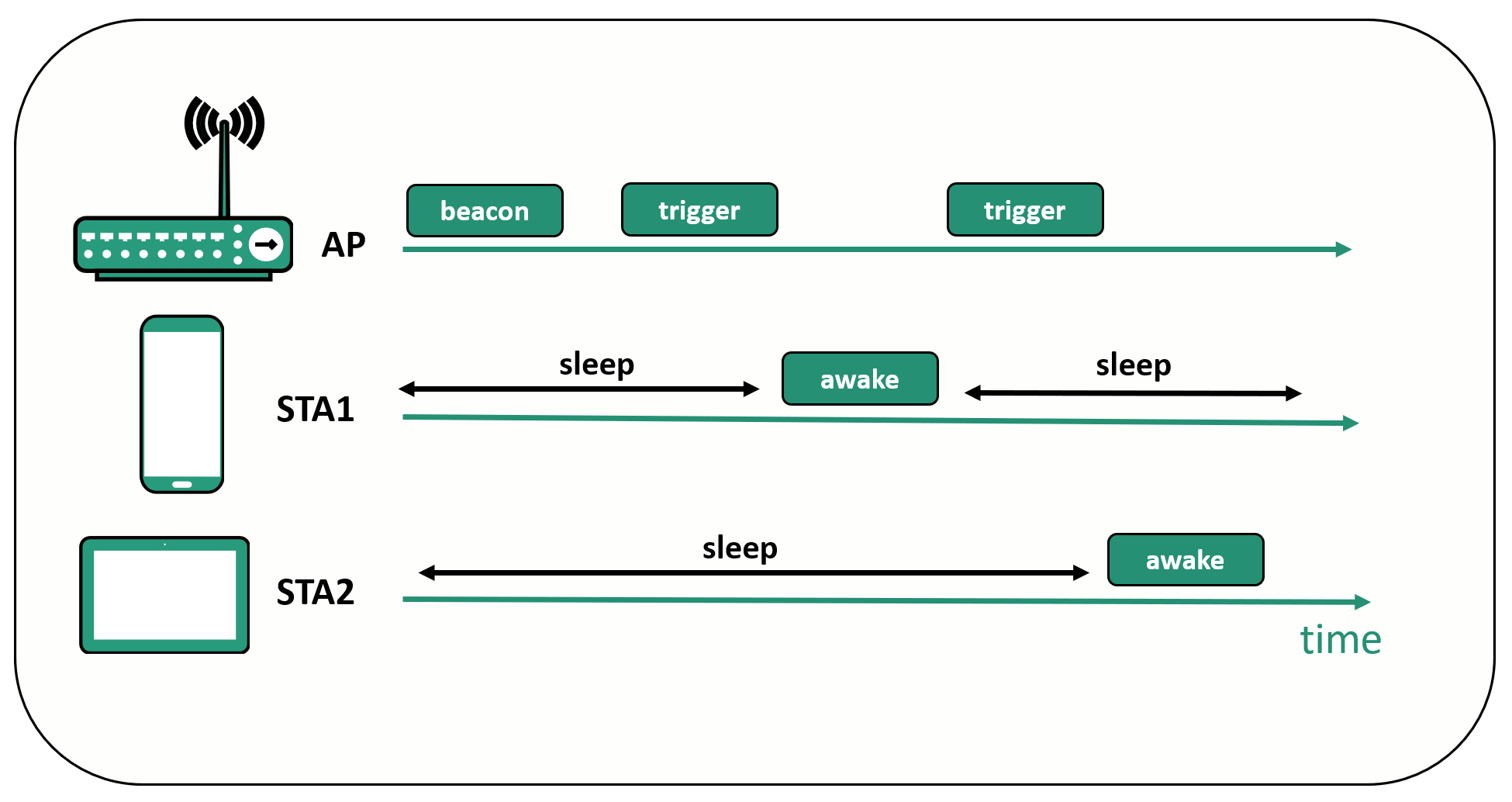
The TWT function helps save energy by putting the station in sleep mode.
Despite these advantages, large numbers of WLAN devices communicating can generate mutual electromagnetic interference that reduces overall WLAN performance. These can be partly mitigated in Wi-Fi 6 through techniques such as dynamic OBSS-PD (OBSS Packet Detection), which adjusts different power threshold values to detect the correct input signal.
However, the main source of interference is the occupation of frequency bands. Until Wi-Fi 6, only two bands were defined: 2,4 GHz and 5,0 GHz.
These two bands were sufficient to handle the number of users and the data rates required. To meet the demand for higher data rates and reliability, a new 6 GHz frequency band was proposed. The band starts at 5,925 GHz and goes up to 7,125 GHz, thus adding another 1200 MHz of spectrum.
Wi-Fi sites can have various signal transmission properties, and there are many variables that affect Wi-Fi performance. It is important to choose the best location for your Wi-Fi antenna(s) while considering materials that could block or absorb wireless signals.
Wi-Fi 6 performance can be measured with Anritsu's MT8862A WLAN tester. This instrument provides a wide dynamic range that allows OTA (Over-The-Air) tests to measure the physical properties of a radio channel. It is also possible to perform IP data connectivity tests up to Wi-Fi 5. With this instrument, Wi-Fi performance can be optimized so that users enjoy a high quality of experience (Quality of Experience, QoE).
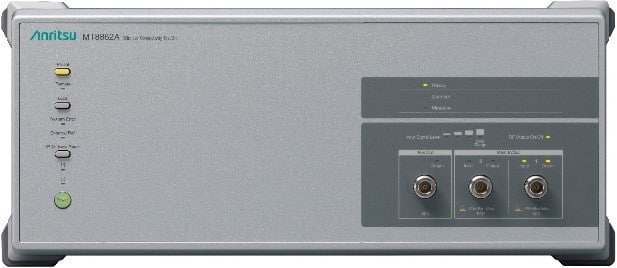
Anritsu MT8862A WLAN Tester.
Businesses can also test the interoperability of many wirelessly connected devices by testing multiple technologies in parallel to see how the quality of WLAN signals is affected. Alternatively, they can check the operation of the receiver (sensitivity test), which consists of gradually decreasing the output power of the MT8862A instrument. The increase in the PER (Packer Error Rate) and FER (Frame Error Rate) error rates can tell a lot about the Device Under Test (DUT) in a given environment. The connection to a DUT can be further degraded by a noise source and then analyzed.
The MT6A's Wi-Fi 8862E support allows testing of the 6GHz band, which brings with it its potential sources of electromagnetic interference. In addition to measuring the overall sensitivity in this band, it is also possible to perform tests on the transmitter. Power, spectrum mask, and modulation accuracy measurements are clearly displayed in the main window of the remote GUI, with more detailed measurement information available in the Numerical Output window.
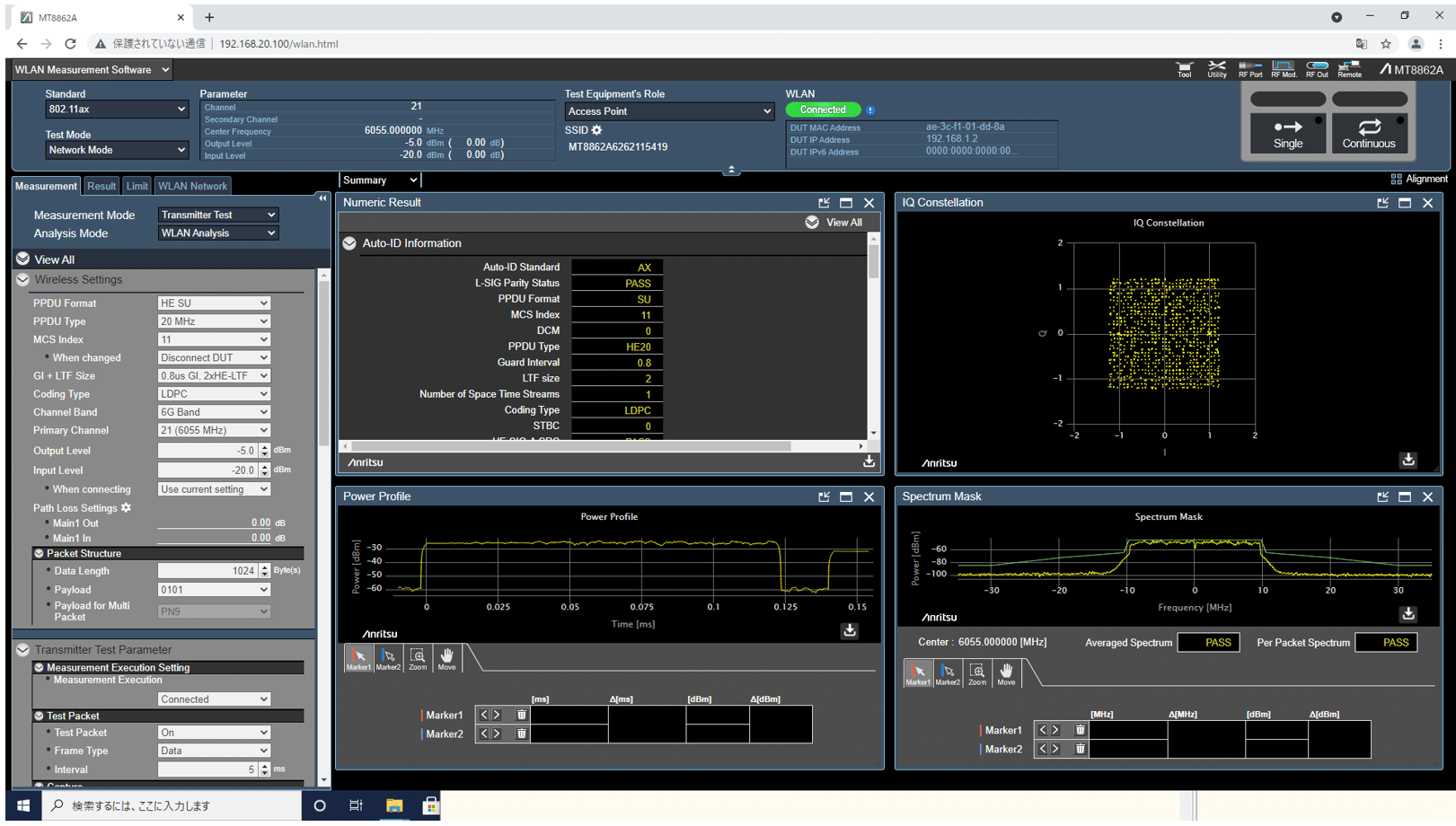
MT8862A Remote Graphical User Interface (GUI).
The remote GUI can also display more information about a connected DUT such as its MAC address, supported MCS standards and values, among others. Within the GUI it is also possible to choose the type of encryption: WEP, WPA/WPA2-Personal/WPA3-Personal. An IP address of a DUT can be assigned statically or dynamically thanks to a built-in DHCP server. Many other typical WLAN network parameters can also be selected in the GUI, such as an SSID name and password (if encryption is applied).
All GUI steps can be further automated thanks to the remote control interface, very handy for automating measurements. To effect this automation, a user can purchase automation tools such as Smart Studio Manager (SSM) or Automation Test Software (ATS). The most adventurous users can go further and do their own automation using languages like Python. Users need to find the right set of instructions and queries to communicate with the MT8862A. All these possibilities make Anritsu's MT8862a WLAN Tester an ideal companion in the laboratory.
For mass production testing of WLAN-connected devices there's a better choice: the MT8870A Universal Wireless Test Package, which offers a quick and easy way to verify the RF properties of wirelessly connected devices. Apart from Wi-Fi 6 technology, it covers others like GSM, WCDMA, LTE, 5G NR and many more. You only need to control the circuit game. Thanks to its large number of RF ports for connections, it is an ideal companion in manufacturing plants.


